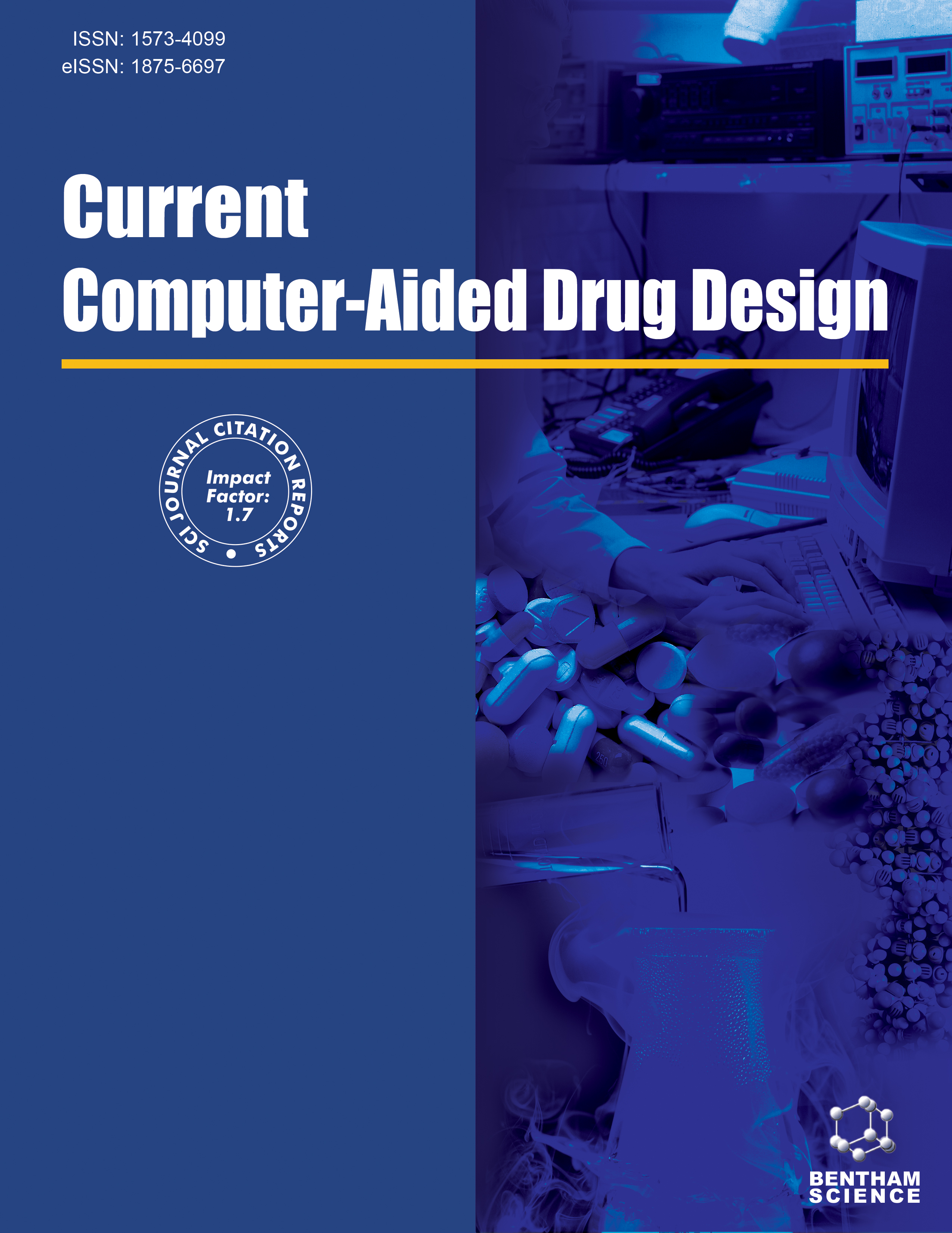- Home
- A-Z Publications
- Current Computer - Aided Drug Design
- Previous Issues
- Volume 8, Issue 1, 2012
Current Computer - Aided Drug Design - Volume 8, Issue 1, 2012
Volume 8, Issue 1, 2012
-
-
Editorial
More LessChemobioinformatics: The Advancing Frontier of Computer-Aided Drug Design in the Post-Genomic Era Modern drug discovery is a highly expensive process, the cost of discovering one new drug ranging from $400 million to $2 billion. Drug design usually starts with the isolation of “lead” compounds, found by different approaches which include ethnopharmacology, natural product chemistry, screening of chemical librarie Read More
-
-
-
Structure-Retention Relationship Study of HPLC Data of Antiepileptic Hydantoin Analogues
More LessAuthors: Tatjana Djakovic-Sekulic, Anamarija Mandic, Nemanja Trisovic and Gordana UscumlicIn the study, 18 antiepileptic hydantoin analogues were investigated by means of reversed-phase HPLC on C- 18 stationary phase and eluent acetonitrile-water. Quantitative structure-retention relationship (QSRR) study has been applied in order to understand factors that affect the retention which is closely correlated to the activity (ED50 values). To overview the compounds for similarities and dissimilarities principal Read More
-
-
-
QSAR Studies on HIV-1 Protease Inhibitors Using Non-Linearly Transformed Descriptors
More LessAuthors: Nallusamy Saranya and Samuel SelvarajHuman Immunodeficiency Virus (HIV)-1 protease is one of the key targets for Acquired Immunodeficiency Syndrome (AIDS). A large number of inhibitors are being designed for this target with the focus towards interactions with backbone atoms to combat drug resistance. In the present study, we have developed QSAR models for 99 inhibitors which include P1/P1' and P2/P2' substituents with diverse scaffolds. In the prese Read More
-
-
-
TAP-Binding Peptides Prediction by QSAR Modeling Based on Amino Acid Structural Information
More LessAuthors: Yuanqing Wang, Xiaoming Cheng, Yong Lin, Haixia Wen, Li Wang, Qingyou Xia and Zhihua LinThe transporter associated with antigen processing (TAP) is essential for peptide delivery from the cytosol into the lumen of the endoplasmic reticulum (ER), where these peptides are loaded on a major histocompatibility complex (MHC) I molecules and form peptide-MHC complex. The peptide-MHC leaves the ER and displays their antigenic cargo on the cell surface to cytotoxic T cells. In this study, 89 physicochemical pr Read More
-
-
-
Fragment-Based Development of HCV Protease Inhibitors for the Treatment of Hepatitis C
More LessA novel computational technology based on fragmentation of the chemical compounds has been used for the fast and efficient prediction of activities of prospective protease inhibitors of the hepatitis C virus. This study spans over a discovery cycle from the theoretical prediction of new HCV NS3 protease inhibitors to the first cytotoxicity experimental tests of the best candidates. The measured cytotoxicity of the compou Read More
-
-
-
A Comparative Study of Drug Resistance Mechanism Associated with Active Site and Non-Active Site Mutations: I388N and D425G Mutants of Acetyl-Coenzyme-A Carboxylase
More LessAuthors: Xiao-Lei Zhu and Guang-Fu YangA major concern in the development of acetyl-CoA carboxylase-inhibiting (ACCase; EC 6.4.1.2) herbicides is the emergence of resistance as a result of the selection of distinct mutations within the CT domain. Mutations associated with resistance have been demonstrated to include both active sites and non-active sites, including Ile-1781-Leu, Trp- 2027-Cys, Ile-2041-Asn, Asp-2078-Gly, and Gly-2096-Ala (numbered according to t Read More
-
-
-
Development of Anti-HIV Activity Models of Lysine Sulfonamide Analogs: A QSAR Perspective
More LessLysine sulfonamide and its structural analogs, a class of Human Immunodeficiency Virus protease inhibitors has gained importance in recent years due to its mode of action. QSAR analysis for multiple ligand-receptor complexes can be performed using binding interaction energies derived from the molecular dynamics simulations. A Receptordependent QSAR (RD-QSAR) analysis was carried out for 65 lysine sulfonamide analogs Read More
-
Volumes & issues
-
Volume 21 (2025)
-
Volume 20 (2024)
-
Volume 19 (2023)
-
Volume 18 (2022)
-
Volume 17 (2021)
-
Volume 16 (2020)
-
Volume 15 (2019)
-
Volume 14 (2018)
-
Volume 13 (2017)
-
Volume 12 (2016)
-
Volume 11 (2015)
-
Volume 10 (2014)
-
Volume 9 (2013)
-
Volume 8 (2012)
-
Volume 7 (2011)
-
Volume 6 (2010)
-
Volume 5 (2009)
-
Volume 4 (2008)
-
Volume 3 (2007)
-
Volume 2 (2006)
-
Volume 1 (2005)
Most Read This Month
Article
content/journals/cad
Journal
10
5
false
en


